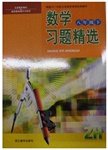题目内容
| He took 200 photographs _____ planet earth _____ total. A. for; on B. of; on C. for,; in D. of ; in |
D

练习册系列答案
 习题精选系列答案
习题精选系列答案
相关题目
题目内容
| He took 200 photographs _____ planet earth _____ total. A. for; on B. of; on C. for,; in D. of ; in |
D

 习题精选系列答案
习题精选系列答案